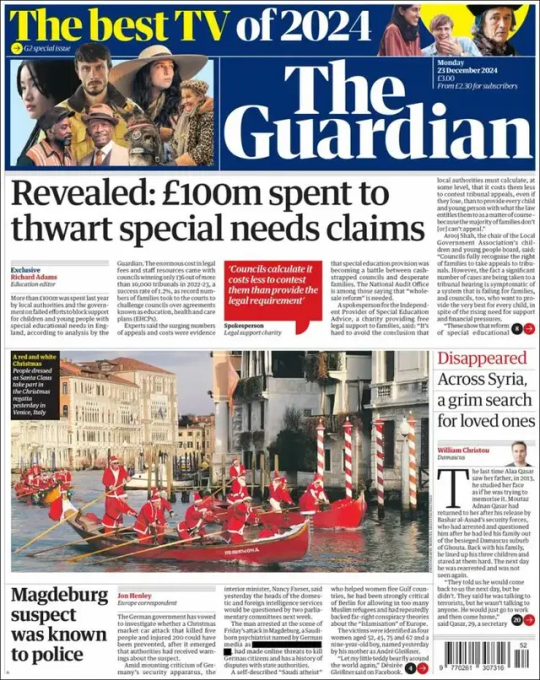#councils
Explore tagged Tumblr posts
Text
Austerity has been biting since 2010, when George Osborne slashed the amount of money councils could receive from central government in one of his first acts as chancellor. Between 2010 and 2020, they lost more than 50% of their government grants in real terms. Six councils have already gone ‘bankrupt’ in the last two years while more than half of the rest say they could follow, meaning they could be taken over by Whitehall or replaced by new authorities.
[...]
Councils are responsible for 800 different services, including meeting Britain’s soaring demand for social care. They also run schools, public health, housing, planning and licensing. “Everyone thinks that councils [just] collect the bins and fix the roads,” said Revans. “We do so, so much more.” Most council services are mandatory, meaning they must legally be delivered. But others – including leisure centres, pest control, museums, and youth clubs – are discretionary, meaning councils can choose whether to offer them or not.
[...]
When David Cameron and Nick Clegg formed the coalition government in 2010, they declared that: “The time has come to disperse power more widely in Britain today.” A year later, the Localism Act became law, giving councils “the legal capacity to do anything that an individual can do”. In practice, that meant not a lot, because councils continue to be fiscally dependent on Westminster. London, for example, relies on strings-attached central government grants for 68.8% of its funding. New York, by comparison, only depends on central government for 26% of its budget, and Paris just 16.3%. Councils can also generate revenue from council tax and business rates, an equivalent tax on business premises. But the Localism Act prevents councils from raising council tax annually above a cap – which is currently 5% – set by the government. Austerity, then, has seemingly overridden any attempt at decentralisation. Fourteen years ago, your council could do a lot more for you, especially if you were in a tight spot. But year after year, it has pared back what it offers to the point that some campaigners fear residents expect less in the first place.
29 notes
·
View notes
Text
Private companies are stealing public parks
“For years now, entertainment mega-corporations have targeted cash-strapped councils as amenable, affordable hosts for their events. From Clapham Common to Glasgow Green, city-dwellers across the UK have become accustomed to basslines vibrating their windows, five-metre fences encircling their playgrounds, and security guards policing what are effectively their gardens.
“Yet as entertainment companies try to recuperate massive pandemic losses with aggressive multi-year deals, while the climate crisis renders urban summers increasingly unbearable, the privatisation of public parkland is becoming harder to swallow.
“In April, dozens of Haringey residents descended on FoFP’s biggest-ever meeting to vent their frustrations, while a recent petition demanding private companies keep their hands off Finsbury Park was signed by thousands ... For the most part, the work of groups like FoFP and FCC is polite engagement with the council to ensure the park is properly maintained. Yet as councils’ approach to major events has become more aggressive, so have the friends groups’.
“In 2016, FoFP took Haringey to court over its outdoor events policy. The group lost the case – though it did win an agreement from Haringey that the money made from the park would be spent on it. Haringey claims to have done this, though to FoFP, the numbers don’t quite add up: while in information obtained by Novara Media via an FoI request, the council claims it spent £871,626 on staffing Finsbury Park in 2020-21, many have questioned where the money is going: the park has had no park ranger since late October, no on-site manager since May. ‘If you’ve got this money […] you sure as hell didn’t spend it here,’ says Simon, pointing to the chipped paint of the bench on which she’s sitting.”
#public parks#parks#public space#green spaces#greenery#local councils#councils#local government#land use#festivals#music festivals#finsbury park#haringey#clapham common#hyde park#london#glasgow green#uk
8 notes
·
View notes
Text
Rewatching Arcane

#arcane#league of legends#viktor#jayce talis#my art#AAAH YES THE HEXTECH DREAM#jayvik#the most stupid thing mel medarda did in her life#mel i love you but that was a REALLY BAD DECISION LMAO#A prayer for Viktor F#A prayer for Jayce the Council hate his autism idk
56K notes
·
View notes
Text
would he fucking say that? let's investigate.
#ray's tag#me convening with the council (my friends who are experts on this character) before publishing a final draft
49K notes
·
View notes
Text
Water Metering: Competitive advantage for scaled IoT
#1-Wire#Bluetooth#Councils#gateway#LoRaWAN#Modbus#Municipalities#NB-IoT#Network#Predictive Analytics#Real-time#Scale#Supply#Utilities#Water Meter
0 notes
Text
The Chairman of the Leadership Council meets with the Speaker of the House and members of the Council's Presidency.
On Thursday, President Dr. Rashad Mohammed Alimi, head of the Presidential Leadership Council, convened a meeting with Sheikh Sultan Al-Barakani, the Speaker of the Parliament, and council members Mohammed Al-Shadadi and Mohsen Basra. The discussions focused on the latest developments in Yemen’s political, economic, and service sectors, particularly in light of the humanitarian crisis exacerbated…
0 notes
Text
The Buddhist Councils
Buddhist Councils are some of the important events that changed the course of Buddhism. After Lord Buddha attained Parinirvana in Kushinagar, India, many senior monks such as Mahakassyapa and Upali were concerned about the teachings, preachings of Dharma, and discipline of all Buddhist monks. The first Historical Buddhist Council is believed to be held in the 5th Century BCE (the date may vary) and was led by Ven. Mahakassyapa. Read more at: The Buddhist Councils - an important event of Buddhism


1 note
·
View note
Text
i'm genuinely having so much fun writing a jock protagonist. can't believe i never tried this before. all these years i've been limiting myself needlessly
#technically he's an ex-jock#fantasy equivalent of a quarterback who peaked in high school#he was a celebrated acrobat for a while and then a sports injury took him out#now he spends his days fishing for sturgeon and falling asleep during council meetings
50K notes
·
View notes
Note
I have finally finished season 2 of Arcane and can now enjoy your art without fear!!! They should be happy together 🥺
I take it "they" means zaundads because that is what I've been drawing the most BUT, lets be honest, applies to like 98% of the characters in the show.
They should've been a big happy familyyyy

#my art#sketchy sketch#arcane#zaundads#silco#vander#arcane powder#arcane jinx#arcane vi#arcane mylo#arcane claggor#poor silco having to deal with so many kids that arent powder/jinx#mylo is gonna get his ass beat if claggor can't save him#powder is just a little monkey on vander lol#silco is going to move if the kids aint gonna leave#he has to write angry letters to thr council again#thanks to the commissions I was able to buy a news screen on my pen tablet#but before it arrives I am using my old janky ass galaxy tab for art so drawing is so much slower#but after Christmas I hope I am back to using my better one#thats my queue to leave
16K notes
·
View notes
Text

a familiar face
(i'll be selling prints of this at megacon london this weekend! do drop by table Z3 if you're around)
(update: now available on my inprnt!)
#you know that one scene in the council room#the mood for this is the 'are they lovers? worse' meme#arcane#jayce talis#viktor#jayvik#art#my art#mine
11K notes
·
View notes
Photo

PRIMA PAGINA The Guardian di Oggi lunedì, 23 dicembre 2024
#PrimaPagina#theguardian quotidiano#giornale#primepagine#frontpage#nazionali#internazionali#news#inedicola#oggi special#issue#from#guardian#history#revealed#thwart#claims#adams#suspect#known#police#took#received#warn#councils#calculate#costs#less#contest#them
0 notes
Text
A shout-out to my Gen Zers cause no one taught me!!!
Make sure you look into your employers Trade Union!!! Eg: the UK's two main ones are called Unison and Unite the Union!!
I think it's called a Labor Union in the US, but I was specifically researching for the UK so it might be a bit different.
I'll add a good link I found on my searching at the bottom.

#trade unions#labor unions#workers rights#work life#employment#gen z#zillenial#work#public libraries#councils#uk government#school#teachers#public sector
0 notes
Text
Yemen wins a seat on the Executive Bureau of the General Assembly of the Arab Union of Constitutional Courts and Councils.
The Republic of Yemen, represented by its Supreme Court, has secured a position on the Executive Office of the General Assembly of the Arab Union of Constitutional Courts. This achievement followed a successful election during a meeting held in Abu Dhabi, United Arab Emirates. The Yemeni delegation was led by Dr. Ali Al-Awash, the Chief Justice of the Supreme Court. Key Decisions and…
0 notes
Text
'National scandal' as record number of children live in temporary housing
'National scandal' as record number of children live in temporary housing #Councils #funding #governmentaction
0 notes
